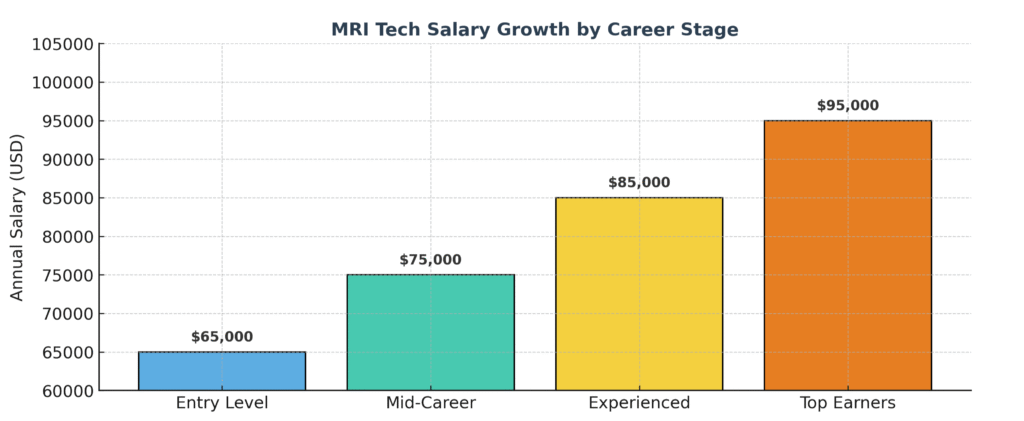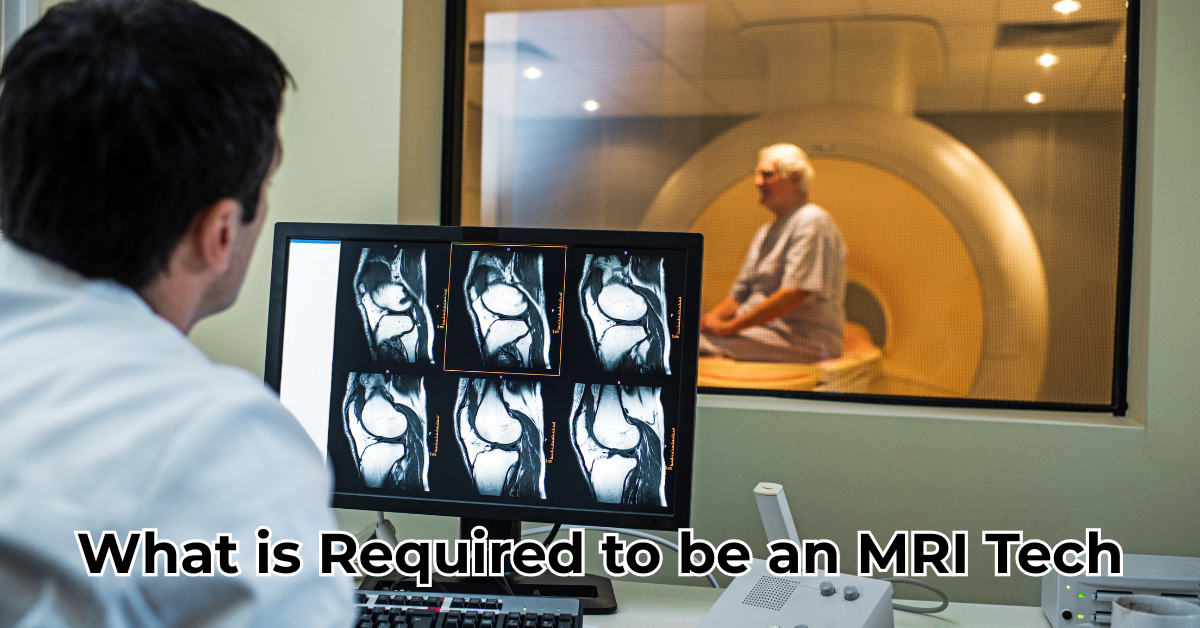A career in the field of healthcare can be life-changing and very rewarding. The best thing is that among the numerous choices, the one of becoming an MRI technologist or MRI tech, as it is commonly referred to, presents a very special combination of technology and treatment. These experts are important in assisting physicians to view what is not visible to the human eye.
Using highly sophisticated MRI machines, they produce very specific images of the body, which are needed to identify the illness and treat it. However, what does it require to get into this career?
Education and training, certifications, and soft skills are only some of the steps to becoming a successful MRI tech. We can simplify all the things you need to know down into simple, clear terms.
Understanding the Role of an MRI Tech
Before diving into requirements, it’s important to understand what an MRI tech actually does. An MRI technologist is a trained healthcare professional who operates Magnetic Resonance Imaging machines—advanced equipment that uses magnetic fields and radio waves to create highly detailed images of organs, tissues, and bones inside the body.
They do not have to press the buttons on a machine. MRI technologists are the ones who are in direct contact with the patient, explain how the procedure works, make them feel at ease and make sure they do not move so that the MRI can accurately capture the image. They also work with radiologists and physicians and prepare pictures that can indicate an injury, tumor or other health issue.
A typical day for an MRI tech might include:
- Preparing patients and reviewing medical histories.
- Positioning patients correctly on the MRI table.
- Adjusting machine settings for specific scans.
- Monitoring patients during the procedure to ensure safety.
- Reviewing images for clarity before passing them to radiologists.
Concisely, MRI tech is the middle ground between the latest medical technology and patient-centered care. It is a job that needs skills and knowledge coupled with a caring nature, thus suited to those people who are passionate about working with machines and people alike.
Education Requirements to Become an MRI Tech
The journey to becoming an MRI technologist begins with education. At the very least, you’ll need a high school diploma or GED with strong foundations in math, biology, and physics. These subjects prepare you for the science-heavy courses that come later.
Most MRI techs pursue either:
- An Associate Degree (2 years) in Radiologic Technology or MRI Technology.
- A Bachelor’s Degree (4 years) in Radiologic Sciences or a related field can provide more career opportunities and higher pay in the long run.
In such courses, students study anatomy, physiology, medical terms, and imaging principles. Patient care, ethics and radiation safety will also be discussed with you. The curriculum is a combination of classroom learning and lab classes to provide you with a solid technical foundation.
When beginning anew, an Associate Degree is sometimes the most straightforward and least expensive to obtain. But with a degree in a related healthcare area, you can enroll in a shorter MRI certificate program that only includes MRI-specific training.
This means that regardless of your choice of an education path, which is either two years or four years, education is your first stepping stone to becoming an MRI technologist.

Training and Certification Programs
Education gives you knowledge, but hands-on training turns that knowledge into skill. Most degree programs include clinical rotations in hospitals or diagnostic centers where you practice under supervision. This real-world experience is critical—it teaches you how to handle patients, operate MRI equipment, and adapt to different medical scenarios.
After completing your degree or certificate, the next big step is certification. In the U.S., the most recognized credential is through the American Registry of Radiologic Technologists (ARRT). To qualify, you’ll need to:
- Graduate from an accredited program.
- Pass the ARRT certification exam, which tests your knowledge and practical skills.
- Agree to follow the ARRT’s standards of ethics.
Some states also require a state license in addition to certification, so it’s important to check local regulations before you start working.
Beyond ARRT, there are other organizations worldwide that certify MRI technologists. Still, the idea is the same—certification proves to employers that you are competent, reliable, and ready to handle the responsibility of scanning patients safely.
Completing your training and earning certification doesn’t just open the door to employment—it also gives you credibility and confidence in your new role.
Skills Every MRI Tech Should Have
Although education and certification may open the door, your success as an MRI tech can be influenced by your ability to be a successful worker, which is often determined by your skills, including technical and personal ones.
The profession lies at the heart of technical skills. You need to know the functionality of MRI machines, the right imaging sequences to choose, and how to troubleshoot when an error occurs. Everything depends on precision, as images may be blurry or incomplete, and a diagnosis may be postponed.
Soft skills are equally important, however. Being an MRI tech means that you are dealing with patients who are likely to be anxious or claustrophobic when in a scanner.
Here, communication, empathy, and patience come in very handy. Being able to explain the process calmly and reassure the patients makes their experience less stressful- and you a better professional.
Key skills every MRI tech should have include:
- Attention to detail – Ensuring images are clear and accurate.
- Communication skills – Explaining procedures in simple terms.
- Problem-solving – Handling equipment or patient challenges smoothly.
- Teamwork – Collaborating with doctors, nurses, and other technologists.
- Compassion – Treating patients with kindness and respect.
In many ways, MRI technologists are a blend of technologists and caregivers. Mastering both sides is what makes the role not only effective but also fulfilling.
Licensing and Continuing Education
Once you are certified, you may also need to secure a state license depending on where you plan to work. Some states in the U.S. require MRI techs to be licensed separately from certification, while others only recognize national certifications like ARRT. It’s always best to check the specific requirements in your state or country.
But the journey doesn’t stop at licensing. The medical imaging field is constantly evolving, with new machines, updated safety protocols, and advanced imaging techniques. To stay current, MRI technologists are required to complete continuing education (CE) credits every few years.
For example, ARRT-certified MRI techs must complete 24 CE credits every two years to maintain their credential. These credits can come from attending workshops, online courses, or specialized training sessions.
Continuing education isn’t just a requirement—it’s an opportunity. It allows you to grow professionally, qualify for leadership roles, or specialize in advanced areas of imaging. Staying updated keeps you competitive in the job market and ensures patients receive the safest and most accurate care possible.
Career Outlook and Salary Expectations
The question is: Is it worth it to be an MRI tech? The answer to this is definitely yes. The job prospects are very bright. The U.S. Bureau of Labor Statistics predicts a steady rise in employment of MRI technologists over the next few years as the population gets older and more and more imaging is performed with advanced technology in both diagnosis and treatment. Professionals are also required in hospitals, outpatient diagnostic centers, and special clinics.
Salary is another motivating factor. On average, MRI technologists in the United States earn between $65,000 and $85,000 per year, depending on location, experience, and additional certifications. In some states or high-demand areas, salaries can even surpass $90,000 annually.
Several factors influence earning potential:
- Experience – Senior technologists usually earn higher wages.
- Location – Urban areas with higher costs of living often pay more.
- Work setting – Private clinics may offer different pay structures compared to large hospitals.
- Certifications – Advanced credentials or cross-training in other imaging technologies can boost salary and open new opportunities.
Beyond the paycheck, many MRI techs appreciate the job stability and flexibility that come with the profession. It’s a career that combines financial security with the personal reward of helping patients every single day.
Final Words
Becoming an MRI technologist is more than just learning how to run a machine—it’s about combining science, technology, and compassion into a meaningful career. From obtaining the right education and certification to building essential skills and pursuing continuing education, each step prepares you to thrive in this fast-growing field.
Suppose you enjoy working with people and have a passion for healthcare technology. In that case, this career path can provide not only strong job security and a competitive salary but also the satisfaction of making a real difference in patients’ lives.
FAQs
What is the best degree for an MRI tech?
An associate degree in Radiologic Technology is the most common, but a bachelor’s degree in Radiologic Sciences offers broader opportunities and higher pay.
What skills are needed for an MRI tech?
MRI techs need technical precision, strong communication, compassion, problem-solving, and the ability to work well with patients and healthcare teams.
How long does it take to learn MRI?
It typically takes 2–4 years, depending on whether you pursue an associate, bachelor’s, or certificate program.

